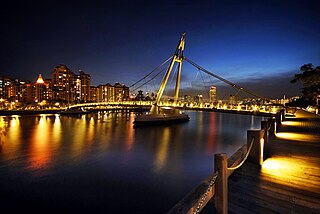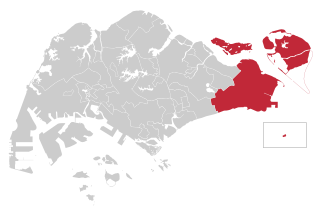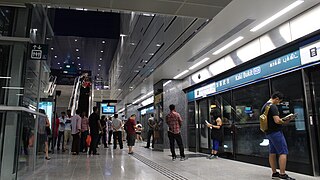This article needs additional citations for verification .(June 2015) (Learn how and when to remove this template message) |
| Fort Canning Reservoir | |
|---|---|
 Fort Canning Service Reservoir | |
| Location | Fort Canning Singapore |
| Coordinates | Coordinates: 1°17′37″N103°50′48″E / 1.29361°N 103.84667°E |
| Type | Reservoir |
| Basin countries | Singapore |
| Built | 1927 |
| Surface area | 27,875.5 square metres (300,049 sq ft) |
The Fort Canning Service Reservoir (Chinese: 福康宁备水池) is an underground reservoir located on top of Fort Canning Hill [1] in Singapore. Construction of the reservoir began on 1 April 1927 on the former site of a large artillery barracks and parade ground to help supplement the large impounding reservoirs. The reservoir was constructed in two sections, the southern section was ready for water storage by 1 August 1928, and the final work completed by the middle of January 1929. [2] Water is pumped from the large reservoirs into the service reservoirs, thus enabling water to flow down the hill into houses.

Fort Canning Hill, formerly Government Hill, Singapore Hill and Bukit Larangan, is a small hill about 48 metres (157 ft) high in the southeast portion of the island city-state of Singapore, within the Central Area that forms Singapore's central business district. Although small in physical size, it has a long history intertwined with that of the city-state due to its location as the highest elevation within walking distance to the city's civic district within the Downtown Core. It is also a popular venue for music shows and concerts.

Singapore, officially the Republic of Singapore, is an island city-state in Southeast Asia. It lies one degree north of the equator, at the southern tip of the Malay Peninsula, with Indonesia's Riau Islands to the south and Peninsular Malaysia to the north. Singapore's territory consists of one main island along with 62 other islets. Since independence, extensive land reclamation has increased its total size by 23%. The country is known for its transition from a developing to a developed one in a single generation under the leadership of its founder Lee Kuan Yew.
Earlier service reservoirs were built on Mount Emily (1878), Pearl's Hill (1903), and Bukit Timah Hill. The size of the Fort Canning Reservoir is 27,875.5 m2.[ citation needed ]

Pearl's Hill, briefly Mount Stamford, is a small hill in Singapore. Located in the vicinity of Chinatown, it is one of the few surviving hills in the city area. Pearl's Hill is well known for once being the site of the former multiple notable institutional buildings such as the Tan Tock Seng Hospital, Seaman's hospital and the Pearl's Hill Prison. The Pearl's Hill Prison is located there because of the close proximity to Sepoy Lines as it was thought to provide protection and security for the prison.

Bukit Timah Hill is a hill located within the planning area of Bukit Panjang in Singapore. The hill stands at an altitude of 163.63 metres (537 ft.) above ground level and 178 metres above sea level, making it the highest natural point in the city-state.
A spring used to exist on the west side of Fort Canning Hill and served as a source of water in the early days of Singapore. The spring was called pancur larangan or "forbidden spring", where the women of the ruler's household were said to bathe in ancient times. In the early period of the 19th century Singapore, the stream was used to provide clean drinking water for all ships stopping at the port until the demand exceeded the capacity by the 1830, and the spring then dried up as wells were dug around the hill. [3] A cache of Javanese-style gold ornaments dating to the mid-14th century were discovered when workers were excavating for the reservoir at Fort Canning in 1928. [4] [5]








